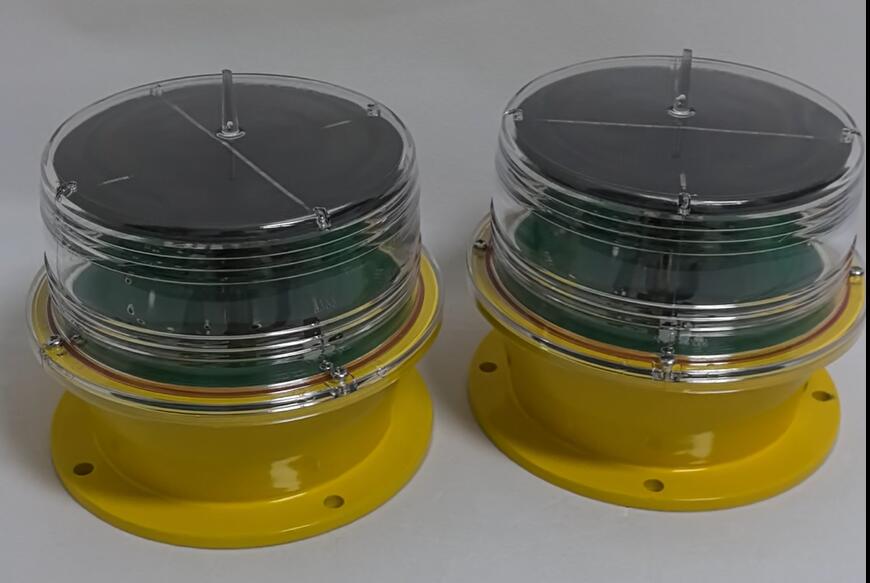Navigating Waters Sustainably with Solar Powered Marine Lanterns
Solar powered marine lanterns have become indispensable tools for ensuring maritime safety and sustainability. These lanterns, powered by renewable energy, provide reliable illumination for marking navigation routes, buoys, and hazards. By combining durability, efficiency, and environmental responsibility, solar powered marine lanterns are transforming how we approach marine lighting solutions.
The Purpose of Solar Powered Marine Lanterns
In maritime operations, visibility is paramount. Solar powered marine lanterns serve as critical markers for safe navigation in waterways, ports, and offshore zones. These devices guide vessels, helping to prevent collisions and ensuring smooth transit, even in the most challenging conditions. Their solar-powered design eliminates dependence on traditional energy sources, making them both eco-friendly and cost-effective.

Key Features of Solar Powered Marine Lanterns
Renewable Energy Source:
Solar powered marine lanterns utilize photovoltaic panels to harness sunlight, storing energy in rechargeable batteries. This approach ensures consistent operation without the need for external power.
| Solar powered marine lanterns |
| Solar powered marine lantern |
High Durability:
Designed to withstand harsh marine environments, these lanterns are resistant to saltwater corrosion, UV rays, and extreme weather conditions.
Autonomous Operation:
Solar powered marine lanterns often feature automatic dusk-to-dawn operation, reducing the need for manual intervention. Advanced models include programmable settings for specific lighting durations.
Energy Efficiency:
With LED technology, these lanterns provide bright, focused light while consuming minimal energy, extending battery life and improving performance.
Compact and Lightweight Design:
Many solar powered marine lanterns are lightweight and easy to install, making them ideal for various applications, including temporary deployments.
Applications of Solar Powered Marine Lanterns
Aids to Navigation (AtoN):
Solar powered marine lanterns are used to mark navigation channels, shipping lanes, and hazards such as reefs and shallow waters.
Buoy Lighting:
These lanterns illuminate buoys to ensure their visibility, helping vessels identify safe routes and anchorage points.
Port and Harbor Lighting:
Solar powered marine lanterns enhance safety in ports and harbors by clearly marking docking areas and breakwaters.
Offshore Installations:
Platforms and wind turbines in offshore zones rely on solar powered marine lanterns to remain visible to passing vessels.
Advantages of Solar Powered Marine Lanterns
Environmental Sustainability:
By utilizing solar energy, these lanterns reduce reliance on fossil fuels and minimize greenhouse gas emissions.
Cost-Effectiveness:
Solar powered marine lanterns eliminate the need for frequent battery replacements and reduce maintenance costs, providing significant long-term savings.
Reliable Performance:
With advanced energy storage systems, these lanterns operate consistently, even during prolonged periods of low sunlight.
Ease of Installation:
The self-contained design of solar powered marine lanterns simplifies installation and relocation, making them suitable for remote and challenging locations.
Technological Innovations in Solar Powered Marine Lanterns
The evolution of solar powered marine lanterns reflects continuous advancements in technology:
Enhanced Solar Panels:
High-efficiency panels enable faster charging and improved performance in low-light conditions.
Smart Monitoring Systems:
Integrated GPS and remote monitoring capabilities allow operators to track lantern performance and identify maintenance needs.
Extended Battery Life:
Lithium-ion and other advanced batteries enhance energy storage, ensuring reliable operation over extended periods.
Color and Intensity Customization:
Modern lanterns offer customizable light colors and intensities to meet regulatory requirements and specific navigation needs.
Challenges and Solutions
Despite their benefits, solar powered marine lanterns face certain challenges:
Weather Dependence:
Overcast or stormy conditions can reduce solar charging efficiency. However, advanced battery systems and hybrid charging options mitigate this issue.
Initial Investment:
While the upfront cost of solar powered marine lanterns may be higher, their low operating and maintenance costs ensure a strong return on investment.
Marine Environment Wear:
Prolonged exposure to saltwater and UV rays can degrade materials. Manufacturers address this with robust, corrosion-resistant designs and UV-stabilized components.
The Future of Solar Powered Marine Lanterns
As the maritime industry embraces sustainable practices, the demand for solar powered marine lanterns is poised to grow. Future developments are likely to include:
Integration with IoT:
Smart lanterns will provide real-time data on performance, location, and environmental conditions.
Higher Energy Efficiency:
Continued advancements in solar panel and battery technologies will enhance efficiency and reduce costs.
Modular Designs:
Modular components will allow for easier upgrades and repairs, extending the lifespan of these devices.
Tips for Choosing Solar Powered Marine Lanterns
When selecting a solar powered marine lantern, consider the following factors:
Light Range:
Ensure the lantern’s range meets the requirements of its intended application.
Battery Capacity:
Opt for a model with sufficient storage capacity for reliable nighttime operation.
Durability:
Choose a lantern with proven resistance to harsh marine conditions.
Compliance:
Verify that the lantern meets international maritime safety standards.
Solar powered marine lanterns are redefining the standards for sustainable and efficient maritime lighting. Their ability to operate autonomously, withstand challenging environments, and reduce environmental impact makes them an ideal choice for modern maritime operations. As technology advances and the need for sustainable solutions grows, solar powered marine lanterns will continue to illuminate waterways and ensure the safety of maritime activities worldwide.
